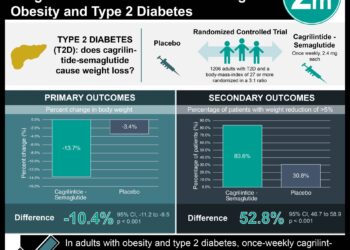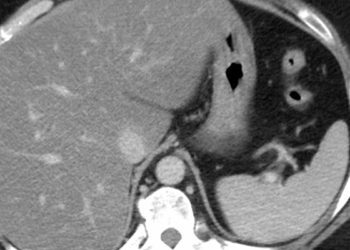2 Minute Medicine Rewind October 6 – October 13, 2014
In this section, we highlight the key high-impact studies, updates, and analyses published in medicine during the past week.
Prevalence of Antimicrobial Use in US Acute Care Hospitals, May-September 2011
Inappropriate and excessive use of antimicrobial drugs in hospitals contributes to increased bacterial resistance and adverse events in patients, but it is unclear how often and for what reasons antibiotics are most often used. In this multi-center randomized prevalence survey, researchers randomly selected and reviewed a total of 11,282 patient records from the hospital census of 183 hospitals during a given day in order to determine antimicrobial use prevalence in US hospitals. The prevalence of antimicrobial use was found to be 49.9% (95%CI: 49.0-50.9%) – half of reviewed patients were confirmed to be on antibiotics at the time of the survey. Nearly one-third of patients on antibiotics were found to be on two antibiotics (32.7%, 95%CI 31.4-33.9%); one-half were on only one antibiotic (49.9%, 95%CI: 48.6-51.2%). Antimicrobials were used mostly to treat infections (75.9%) and less commonly for surgical prophylaxis (19.0%) or medical prophylaxis (6.9%). The most commonly used antimicrobial drugs were vancomycin (14.4%), ceftriaxone (10.8%), piperacillin-tazobactam (10.3%), levofloxacin (9.1%), and azithromycin (5.1%). Broad-spectrum antibiotics were frequently given for both healthcare-associated and community-associated infections, reinforcing a need for increased antimicrobial stewardship.
Selective oral decontamination (SOD) and selective decontamination of the digestive tract (SDD) is often administered as prophylaxis for ICU-acquired respiratory tract infections, but there is debate over their relative benefits and their effect on antibiotic resistance. In this cluster-randomized crossover trial, 16 Dutch ICUs were randomized to administer SOD or SDD for 12 months in order to compare unit-wide prevalence of antibiotic-resistant gram-negative bacteria measured from respiratory and rectal samples. Rectal colonization of aminoglycoside-resistant bacteria (overall 11.8% and 5.6% during SOD and SDD, respectively) increased over the study period for both groups, but particularly during SDD (trend in time 4% per month [95%CI 0-8%] during SOD vs 7% per month [95%CI 1-13%] during SDD, p value for difference <.001). Prevalence of respiratory tract colonization with antibiotic-resistant bacteria was much lower during the study period (most less than 3%) and there was no significant increase in prevalence over time. In addition, there was no difference in mortality or length of stay between the SOD and SDD groups, though fewer patients who received SDD experienced ICU-acquired Enterobacteriaceae bacteremia (4.6% vs 5.9% during SOD, OR 0.42, 95%CI 0.65-0.91, NNT 77).
Follow-up of Blood-Pressure Lowering and Glucose Control in Type 2 Diabetes
In the ADVANCE (Action in Diabetes and Vascular Disease: Preterax and Diamicron Modified Release Controlled Evaluation) trial, patients with Type 2 diabetes and at least one other cardiac risk factor were randomized to perindopril-indapamide combination pill or placebo and intensive (HA1c <6.5%) or standard glucose control for on average 4.5 years. That trial showed a mortality benefit with routine blood pressure lowering but not tight glucose control. In this observational study, investigators enrolled 8,494 (of 10,261 invited) ADVANCE trial participants in annual post-trial follow-up evaluation in order to determine the long-term effects of the blood pressure and glucose interventions on death from any cause and major macrovascular events. The in-trial 14% risk-reduction for death from any cause for patients assigned to perindopril-indapamide therapy was less during post-trial follow-up, but was still significant (HR 0.91, 95%CI 0.84-0.99). No difference in death from any cause was seen for patients assigned to tight or standard glucose control in the post-trial period, consistent with in-trial results, though a difference in patients with end-stage renal disease persisted (HR 0.54, 95%CI 0.34-0.85).
Advances in cardiac stress testing and imaging have raised concerns about increased healthcare costs and radiation exposure, but little is known about the temporal trends in cardiac stress testing nationally. In this repeated cross-sectional study, authors analyzed the number of cardiac stress tests ordered from 1993-2010 as reported in the National Ambulatory Medical Care Survey and National Health Ambulatory Medical Care Survey to determine trends in cardiac stress testing and imaging in patients without known cardiovascular disease. Overall, there was an increase in cardiac stress testing ordered from 28 to 42 per 10000 visits, however this was non-significant after adjusting for patient characteristics, risk factors, and physician characteristics (p=.134). The proportion of stress tests with imaging made up an increasing portion of stress tests ordered from 1993 to 2010 (59% to 87%), and this trend continued to be significant (p<.001) after adjusting for patient and physician factors. The researchers estimated that 30% of stress tests with imaging and 14% of stress tests without imaging were inappropriately ordered based on the associated diagnosis, resulting in excess costs of $501.7 million annually and 10.2 mSV of unnecessary radiation exposure.
Robotically assisted surgery is common and widely accepted for prostatectomy, but its increasing use in other surgical procedures has been criticized. In this nationwide hospital database analysis, authors examined 87,514 cases of oophorectomy and ovarian cystectomy for benign causes from 2009-2012 to determine trends in and outcomes of robotically assisted surgery compared to laparoscopic surgery. Use of robotically assisted oophorectomy increased from 3.5% to 15% from 2009 to 2012, and use of robotically assisted cystectomy increased from 2.4% to 12.9% (p<.001 for both). Robotically assisted surgery was associated with significantly more interoperative complications during oophorectomy (3.4% vs 2.1% of laparoscopic surgery, p<.001) and ovarian cystectomy (2.0% vs 0.9%, p=.004). Median total cost for robotic-assisted oophorectomy ($7,426) and cystectomy ($7,444) was also higher than laparoscopically performed procedures ($4,922 and $4133 respectively, p<.001), with a median increase of $2,504 total cost per oophorectomy and an increase of $3,310 total cost per cystectomy. The authors propose that the findings of slightly increased complication rates and significantly increased costs associated with robotically assisted adnexal surgeries highlight a need for caution in acceptance of robotically assisted procedures.
Image: PD
©2012-2014 2minutemedicine.com. All rights reserved. No works may be reproduced without written consent from 2minutemedicine.com. Disclaimer: We present factual information directly from peer reviewed medical journals. No post should be construed as medical advice and is not intended as such by the authors or by 2minutemedicine.com. PLEASE SEE A HEALTHCARE PROVIDER IN YOUR AREA IF YOU SEEK MEDICAL ADVICE OF ANY SORT.







